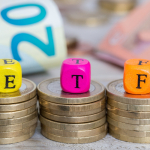It's possible that the markets might rise back up in July. Not only did the FTSE All-World equity index moved back into positive territory last week, but it also rose above key measures of momentum, indicating that of a larger break in turn attracts further buying.
Tech has continued to drive the market as a whole, exhibiting key aspects of the quintessential late-cycle pattern. While large US banks such as JPMorgan
The S&P 500 has outperformed the FTSE All-World, excluding the US, by around 10% since early May.
European equities have rallied in the past two weeks and Asia-Pacific markets, excluding Japan, have just broken a four-week run of losses. Global equities are enjoying a respite, but it remains to be seen whether this is nothing more than a short-lived bounce.
Helping set the tone this week will be the views on trade, the economy and inflation from Fed chair Jay Powell and how this plays out in terms of the US bond yields and the dollar when he speaks on Tuesday and Wednesday. The Fed's semi-annual monetary policy report released on Friday represented an optimistic outlook for the economy and downplayed threats from trade protectionism.
Most Asian share markets rose on Friday, supplemented by gains on Wall Street on the expectation of strong US earnings, but China's markets wobbled as investors braced for the impact of broadening, tit-for-tat Chinese-US tariffs.
Adding to the fear that even stronger punitive measures from Washington may be on the way, China reported a trade surplus with the US of $28.97bn in June, the highest on record.
MSCI's broadest index of Asia-Pacific shares outside Japan was up 0.6%, adding to a 0.6% rise on Thursday, after US stocks ended the day higher.
The MSCI index rose on gains in Taiwan shares, which rose 0.8%, Seoul's Kospi, which added 1%, and Hong Kong's Hang Seng index, which was 0.5% higher.
The dollar, which has been a safe-haven amid global uncertainty over trade, touched ¥112.70 against the yen, its highest level since January 10, boosted by the expectation of higher US inflation. At 3.05am GMT, it was flat on the day at ¥112.58.
The dollar index, which tracks the greenback against a basket of six major rivals, was up less than 0.1% at 94.846. The euro was down a hair at $1.1667.
In commodities, US crude crept down to $70.30 a barrel.
The pound seemed to have weathered last week's Brexit white paper publication and cabinet resignations, raising hopes that a floor in the currency had been reached. Sterling volatility is surprisingly low, given the political heat being generated.
It is more straightforward for investors to trade the pound on monetary policy, and most analysts are looking at market pricing that strongly expects a rate increase at the August meeting of the Bank of England. What also remains to be seen is how European leaders respond to May's proposal. A hardening of its position will be negative for the pound and put the prime minister under pressure to offer further concessions. That could cause further volatility within the British government.














